The tiger species, known as Panthera tigris, are the largest cats and one of the Big Four, and there are a total of 9 tiger subspecies. Unfortunately, the population of these animal species has reduced by 95%.
The World Wildlife Fund estimated the number of tigers remaining on earth to be about 40% only. With the decline in tigers worldwide, only six species remain, and the remaining three are extinct.
The 6 Living Subspecies of Tiger
Activities like Illegal hunting and poaching, and habitat loss are the most significant threats these tiger subspecies face. Luckily, some of them have survived to date. Below are all the six living tiger subspecies.
Bengal Tiger
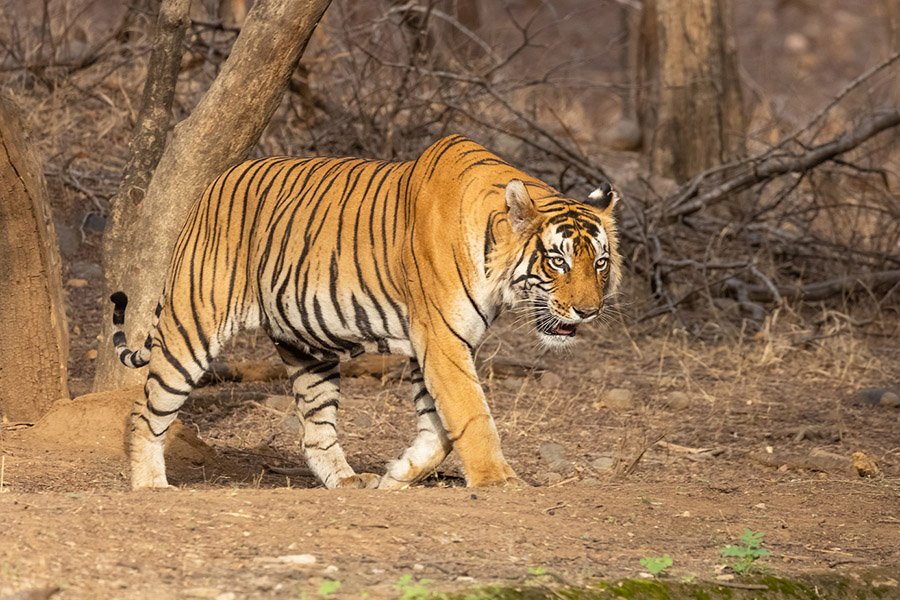
- Scientific Name: Panthera tigris tigris
- Where Found: India, Nepal, Bangladesh, and Bhutan.
- Population: 2500- 3750
- Conservation Status: Endangered
The Bengal Tiger is also known as the Royal Bengal Tiger. They were around during the late Pleistocene, dating from 12,000 to 16,500 years ago.
It has a characteristic yellow or light orange coat with black or dark brown stripes that sets it apart. It has an orange tail lined up with black rings, while the interior and belly parts are white.
The weight of a male and female Bengal differs, with the male weighing between 397 to 569 pounds, while the female weighs between 220 to 350 pounds. They have remarkably stout teeth with canines measuring as long as 3. 0 to 3.9 in.
Bengal tigers love to live solitary lives. They only come together temporarily when there is plenty of food. An isolated mutation among these tigers is the white tiger.
A white tiger can be seen to be an effect of the recessive mutation, which sometimes occurs. However, this does not in any way indicate albinism.
Siberian Tiger

- Scientific Name: Panthera tigris altaica
- Where Found: Southeast Russia, China, North Korea.
- Population: 450 to 500
- Conservation Status: Endangered
Amongst all the subspecies of the tiger species, the Siberian tiger is the largest. They live primarily in southeastern Russia. The male Siberian tiger weighs 320 kg (700 lb). The female weighs about 180 kg (400 lb).
Siberian tigers have striped bodies, and just like unique fingerprints in humans, each tiger has its distinguished pattern. This trait is also shared by other tiger subspecies. They also have the advantage of having manes in addition to their thick fur, which helps to add warmth to them.
These animals live a solitary lifestyle, and as they move, they leave scents on the path they cross to mark their presence. Siberian tigers like to stalk their prey closely before pouncing on them. They take the kill to an isolated area before feeding on it.
Indochinese Tiger

- Scientific Name: Panthera tigris corbetti
- Where Found: Southeast Asia.
- Population: 350
- Conservation Status: Endangered
Indochinese tigers are mostly seen to inhabit the southern regions of Asia like Laos, Thailand, Vietnam, and Cambodia. Apart from Thailand, with a more significant concentration of these cats.
The male Indochinese weighs 150 to 195 kg (331 to 430 lbs). The female weighs about 100 to 130 kg (220 to 290 lbs). Indochinese tigers are relatively smaller compared to Siberian and Bengal tigers, but they are larger than the Malayan tiger.
These tiger subspecies love to live in evergreen, deciduous, tropical rainforests, and both tropical and subtropical dry forests. They have an orange body with black stripes, a white underside, and ruff areas. They are nocturnal animals who like to rest during the day and work at night.
Sumatran Tiger
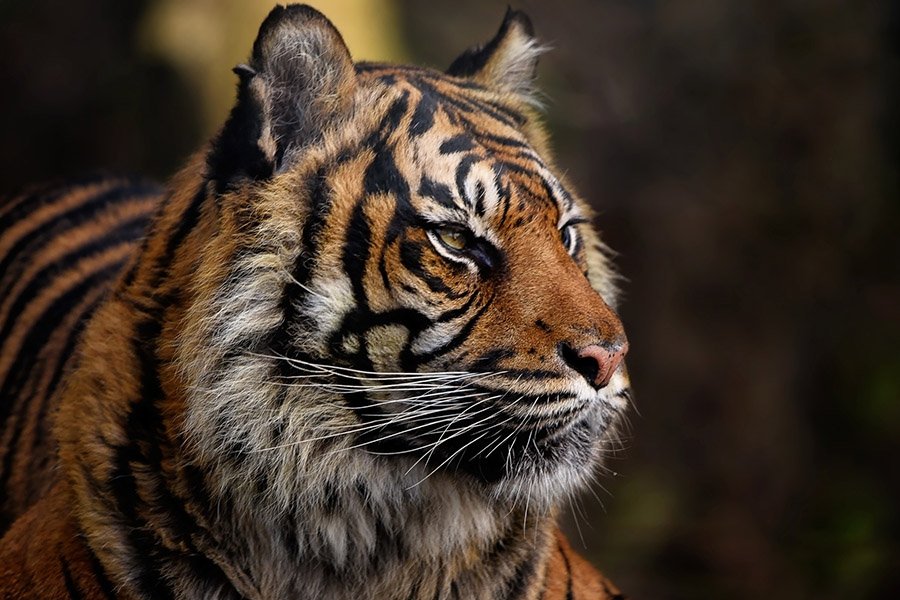
- Scientific Name: Panthera tigris sumatrae
- Where Found: Island of Sumatra in Indonesia.
- Population: 400
- Conservation Status: Endangered
The Sumatran tiger can be seen on the Island of Sumatra in Indonesia. It is the smallest subspecies of tigers. There has been about 20% loss in the habitat of these animals between 2000 and 2012. The male Sumatran tiger weighs 100 to 240 kg (220 to 310 lbs), while the female weighs 75 to 100 kg (165 to 243 lbs).
It has the darkest orange body, different from others, with black stripes, but this time, the stripes are closer. Its body contour makes it easy to fit in the tropical rainforest environment. One other thing that sets this animal out is its mane and beard.
Like other cat species, Sumatran tigers are natural carnivores, meaning they prey on other animals to survive. Some of their prey include monkeys, deer, fish, tapirs, etc. Once they make a kill at night, they devour their game in a secluded area.
South China Tiger
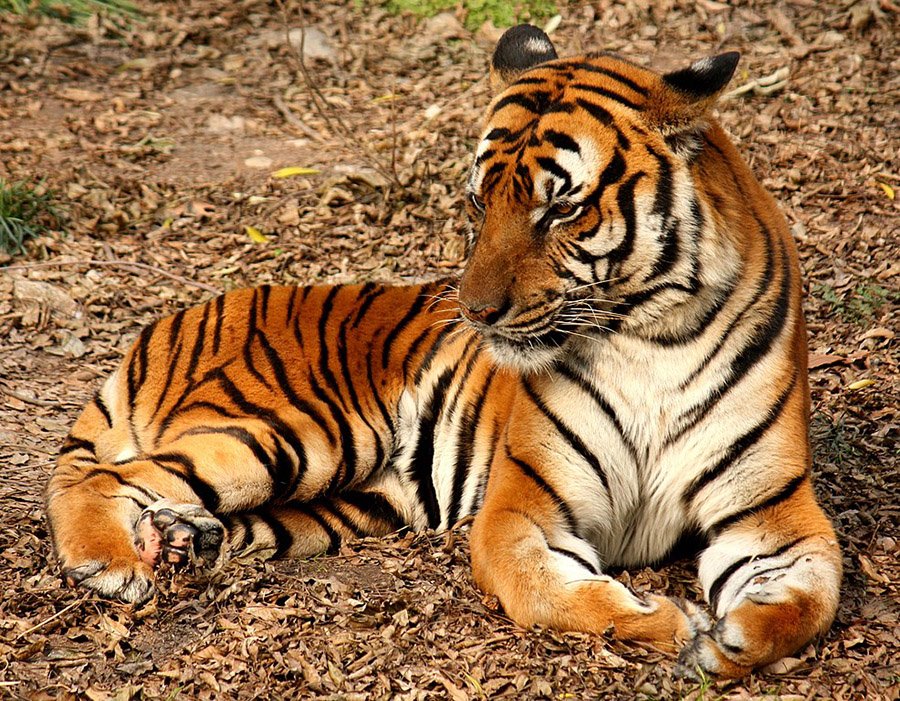
- Scientific Name: Panthera tigris amoyensis
- Where Found: China.
- Population: 20 to 50
- Conservation Status: Critically Endangered
The South China subspecies are probably the most endangered tiger subspecies in the world. It has dramatically declined in number over the years, and they now live in confined areas in south China. Conservationists are trying every means possible to save this species from total extinction.
The male South China tigers weigh between 110 to 175 kg (243 to 385 lb). South China tigers are powerful hunters that show off their regal symbolic strength. They have a small body size which enables them to move swiftly in the forest.
They evolved from the much older tigers, making them similar to the ancient species. Its strips have a unique outline for each tiger, meaning no two tigers have identical stop patterns.
Also, like the other tiger species, this one has a dark orange background with black stripes. However, the stripes of South China tigers are visibly thicker and more widely spaced.
Malayan Tiger
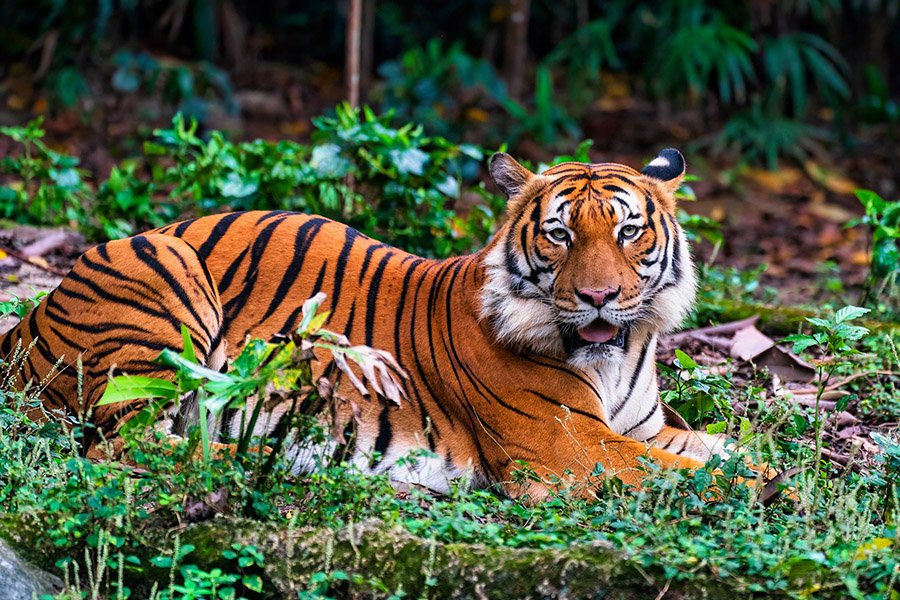
- Scientific Name: Panthera tigris jacksoni
- Where Found: Malaysia.
- Population: 150 to 200
- Conservation Status: Endangered
The name suggests that these tigers live in Malaysia. They constitute one of the smallest populations of tigers that live on the mainland. Except during breeding seasons, they live alone.
Males weigh between 47.2 to 129 kg (104 to 284.7)lb, while females, which are smaller, weigh between 24 and 88 kg (52 to 195lb). Each Malayan tiger has a unique strip pattern for the animal alone.
These tiger species are great swimmers and can swim across rivers. They are primarily nocturnal animals that hunt at night and sleep during the day.
Male Malayan tigers practice territoriality and fight off any other male invading their territory. They communicate amongst themselves by growling, roaring, and making puffing sounds.
The 3 Extinct Subspecies of Tiger
The continuous activities of humans, like poaching, hunting, and habitat loss, keep affecting tiger species. Measures must be implemented to ensure the remaining living tigers do not go extinct too.
In over a decade and until now, the Bali tiger, Javan tiger, and Caspian tiger have not been seen. These three subspecies of tigers have gone into extinction.
Javan Tiger (Panthera tigris sondaica)
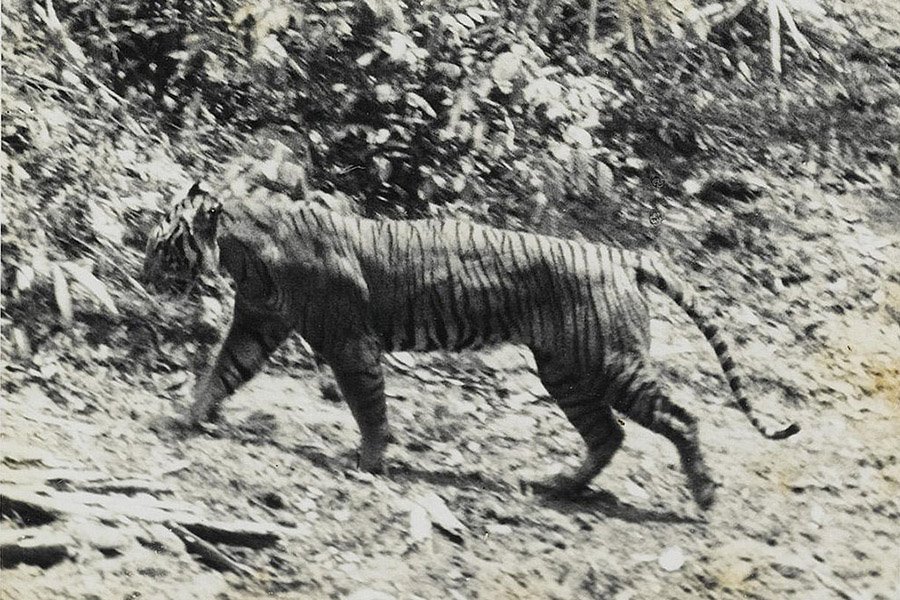
The Javan tiger is one of the tiger species that existed on the Indonesian island of Java until the mid-1970s when it became extinct. Now its habitat has been encroached upon by the human population.
They are smaller, like the Sumatran tiger but larger than the Bali species. The small-sized body of Javan tigers made it easy for them to navigate the forest quickly. The male weighed between 100 to 141 kg, while the female weighed about 75 to 115 kg.
Bali Tiger (Panthera tigris balica)

The Bali tiger, which once lived on the island of Bali, Indonesia, is also an extinct Tiger species. Out of the nine tiger subspecies, Bali is the smallest and also the first to go extinct among the three subspecies tigers of Indonesia.
Male Bali tigers weighed about 200 lb, while females weighed about 150 lb. It had dark orange short furs with few stripes on the body with white coats at the underbellies.
Caspian Tiger (Panthera tigris virgata)

The third extinct tiger that lived in Asia is the Caspian Tiger. In the 1970s, it was hunted to extinction. This tiger subspecies was very large, with the male weighing up to 550 pounds.
They had golden yellow fur with very tiny brown stripes. The furs tend to look duller and less pronounced during winter. Caspian Tigers were hunters and ate a wide range of food, deer, monkeys, wild pigs, and any other animal within their territory.
Frequently Asked Questions
How Many Tigers Are Left in the World?
According to WWF, the number of remaining tiger species is about 4500. Human activities like poaching and illegal hunting have led to a decreasing number of tigers worldwide. Loss of natural habitat due to agriculture is also a significant reason for this decline in number.
How Many Species of Tiger Are There?
There is only one species of tiger in the world – Panthera tigris – and it has 9 subspecies. A subspecies is a member of a species that is different physically or genetically from other members of the same species.
Panthera tigris has three extinct subspecies and six living species, which include Bengal, Sumatran, Indochinese, South China, Siberian, and Malayan tigers.
What is The Rarest Tiger?
South China tigers are the smallest and rarest of all the six living tiger subspecies worldwide. They are critically endangered, with just a few dozen remaining today. The remaining South China tigers have been confined to the zoo, with none seen in the wild for over ten years. The conservation efforts to save these iconic tigers have doubled over the years.
What is The Most Common Tiger Subspecies?
The most common tiger subspecies that can be easily seen is the Bengal tiger. These tiger subspecies are in India, Nepal, Bhutan, and Bangladesh. There are more of this subspecies owing to its large population of about 2,500 to 3,750 animals remaining, making it the most common tiger subspecies.
What is the Biggest Type of Tiger?
Among the tiger subspecies, the Siberian tiger is considered the biggest. The males can weigh as much as 300 kg (660 pounds) and as long as 10.5 feet. The female is smaller and weighs up to 100 to 167 kg (200 to 470 pounds) and is 8 feet in length.
What is The Smallest Tiger?
Besides the Bali tiger, which is now extinct, Sumatran tigers are the smallest living tiger in the world. They weigh about 140 kg and 110 kg for males and females, respectively. Another distinguishing factor is that they have very dark furs and stripes that are closer to each other when compared with those of other tigers.



